The plants in the Log House Museum garden are indigenous to the Pacific Northwest and are well-adapted to the moist, cool climate of our region. This is a point of contact garden, representing some of the plants that would have been growing here in 1851, and were being used by the Native people of the area before the arrival of the Alki Party. Over 150 years ago many of these plants were used as food, medicine and to make tools, though many of the uses are discouraged today. Here is a selection of some of the plants that can be found in our garden.
Bulrush This is a common wetlands plant. Bulrush stems, also known as tules, can be woven to make baskets, mats, bowls, chair thatching and clothing. New shoots are tender and edible.
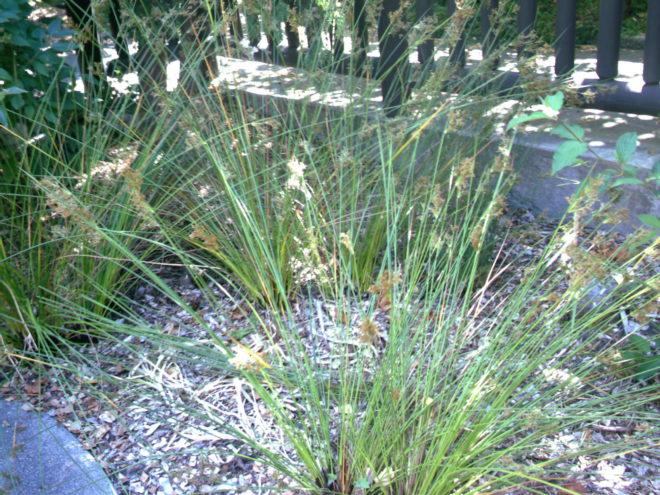
Costal Strawberry This member of the rose family is primary found in maritime environments, unlike other close relatives the Woodland and Wild Strawberry. Tea made from these leaves have been used to treat diahhrea. The edible berries historically were best eaten fresh as they were too juicy for preservation by drying prior to canning and freezing methods.
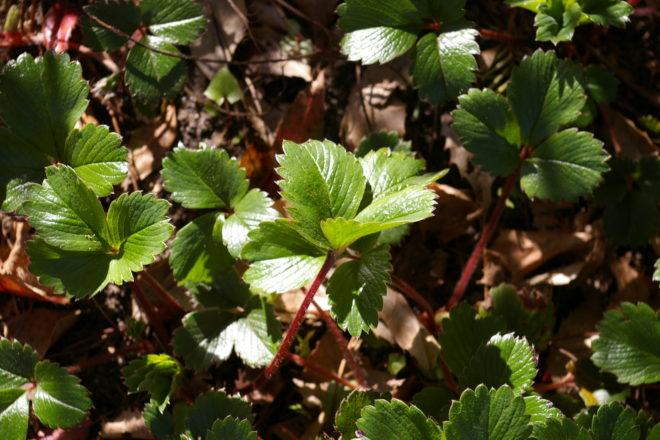
Common Camas
Like Great Camas, Common Camas is a stunning and iconic Northwest wildflower with a sweet, edible bulb and blue-purple flowers.
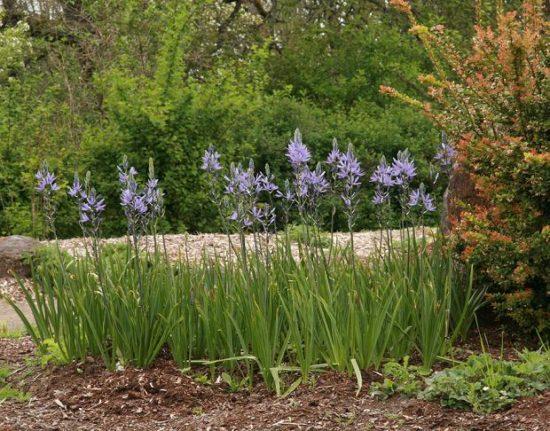
Currant, red flowering These beautiful decidiuous shrubs grow in dry woods and open sites. The berries are edible and continue to be highly prized for their sweet-tart flavor as a summer fresh food and dried winter staple.
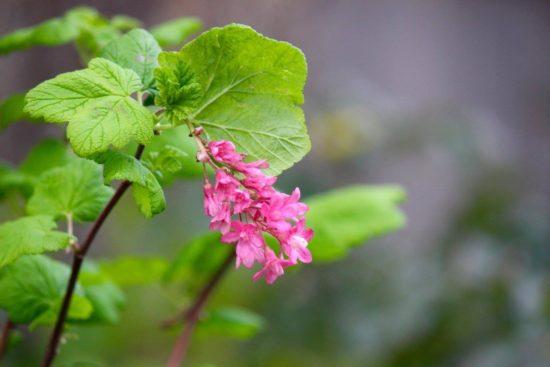
False Solomon’s Seal The young shoots of this plant are edible. Its leaves can be used as a laxative, to soothe a sunburn and as a cough suppressant. False Solomon’s Seal blooms small white flowers in April to June and then bears small red berries, which attract birds. Do not confuse this plant with the highly toxic False Hellebore that looks similarly when young.
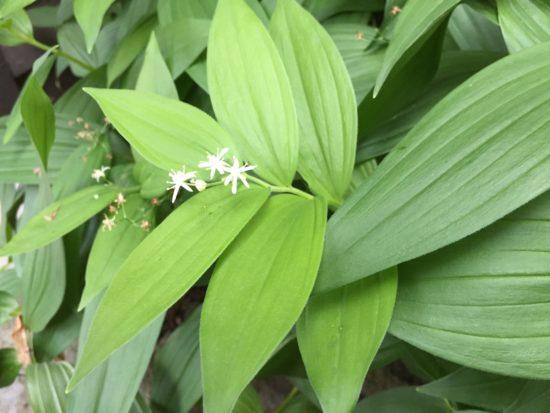
False Hellebore (Corn Lily)
False hellebore is poisonous from the time it starts to grow until after it is killed by freezing, but toxicity decreases as plants mature. The roots are 5 to 10 times as poisonous as leaves or stems. The poisonous substances in false hellebore are steroidal alkaloids. False hellebore grows in damp or seepage areas, on meadows, and on hillsides. The plant reaches a height of 1.5 to 2 meters. It is a robust perennial of the lily family.
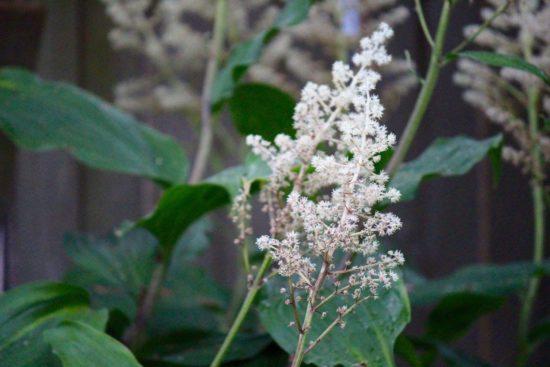
Goatsbeard
Goatsbeard is a very showy plant growing up to six feet tall in large bushy clumps. Feathery clusters of tiny cream colored flowers grow on long branched spikes high above the leaves and bloom from late May through mid July. Goatsbeard is a dioecious plant meaning each plant has either all female flowers or all male flowers. Plants with male flowers produce showier blooms than plants with female flowers. The word “Aruncus” comes from the Greek word aryngos (goat’s beard) and refers to the plume of flowers. The bi-pinnately compound leaves are toothed and lower leaves tend to be larger than higher leaves.

Huckleberry, Evergreen
Evergreen Huckleberry is found on the west side of the Cascade Mountains from British Columbia to California. Along the coast of California, it is common to the redwoods but sporadic further south.
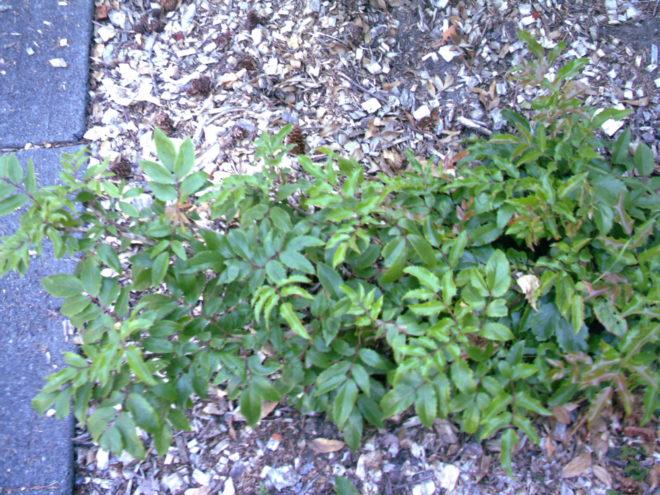
Oregon Grape This is the second most common shrub in the Pacific Northwest. Its berries ripen in August, attract birds and can be harvested to make preserves. The roots were also used by Native Americans to make dye.
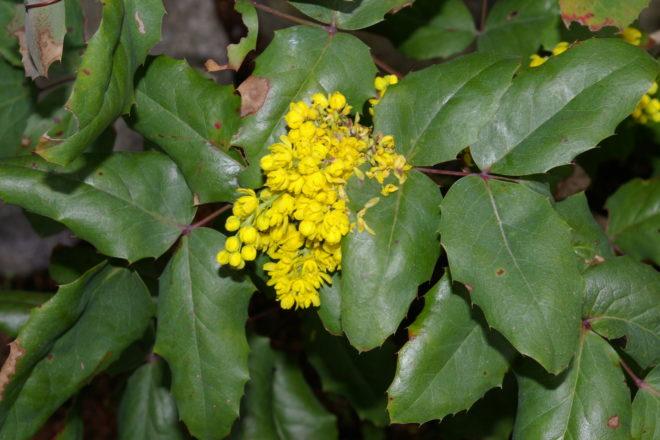
Oregon Iris
This flower blooms in mid-to-late spring. The leaves can be used to induce vomiting and help with depression. Native people used to weave the leaves together to make rope. This flower grows well in shaded areas.
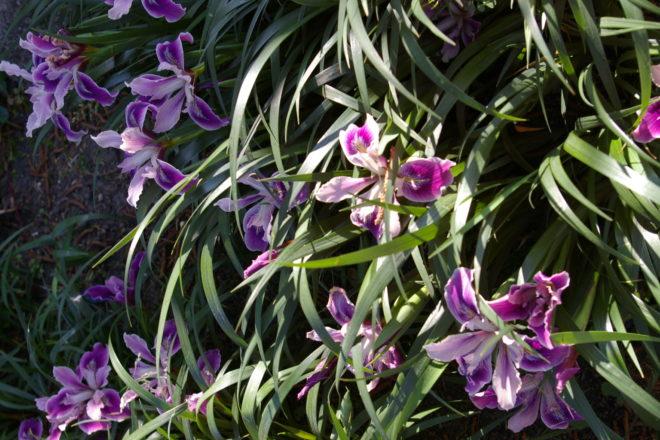
Paper Birch The sap and inner bark can be used as an emergency food source. Native Americans used the bark for making canoes and also as paper. Some medicinal uses include encouraging milk production in nursing mothers, a treatment for dysentery, and coolant for rashes and sores. This tree is widespread throughout the United States and is adaptable to different environments.
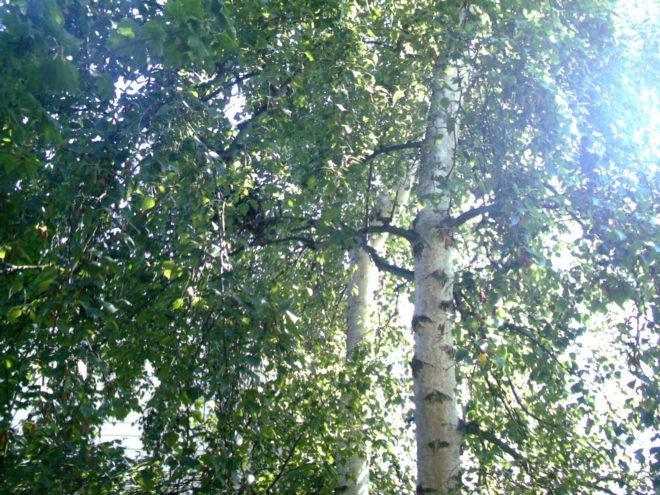
Pacific Dogwood
Indigenous people used the bark of Pacific dogwood to make a brown dye and a decoction for stomach trouble. Young shoots were often used for weaving baskets. The wood of this species is hard and heavy and has been used commercially to make a wide variety of products including bows, arrows, thread spindles, cabinets, piano keys, mallet handles, and golf club heads. In medieval times, the hard wood of dogwood species was used for making wooden daggers.
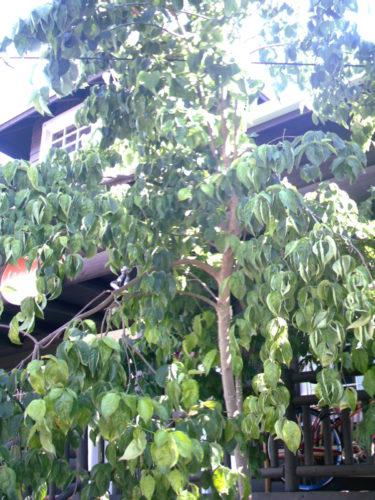
Pacific Yew
Yew wood is hard, fine-grained, and heavy, with white or creamy sapwood and amber to brown heartwood. The lumber was once popular for cabinetwork, implements, and archery bows; it is used more today for carved articles and turnery. The bark of some species, notably the Pacific yew (T. brevifolia), contains quantities of the alkaloid taxol, which has proved effective in the treatment of some types of cancer.
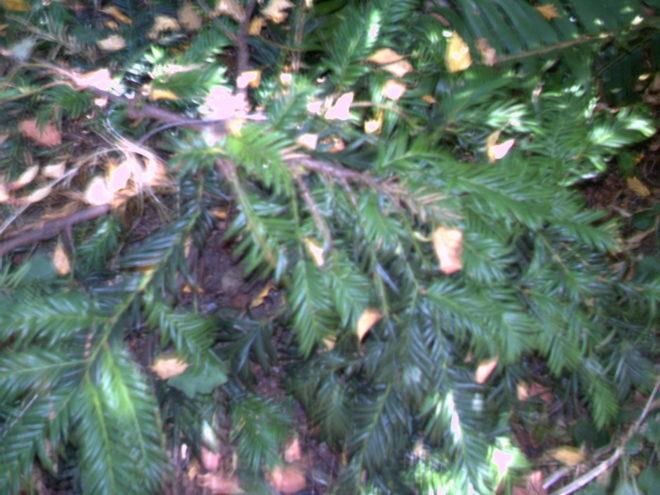
Red Osier Dogwood This shrub grows well in low moist places. Its autumn foliage is red, and so sometimes are the twigs (it is also known as the Red Twig Dogwood). Its berries can be white or blue. They are edible but bitter. The bark was sometimes smoked alone or with tobacco by native peoples.
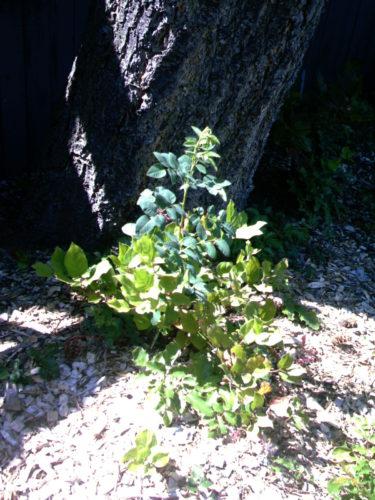
Redwood Sorrel This ground cover looks like a field of overgrown shamrocks! The leaves are edible and great in salads or pies. It can be used as a diuretic, is a good source of vitamin C and calms an upset stomach. Redwood Sorrel is a member of the clover family and has several poisonous look-alikes.
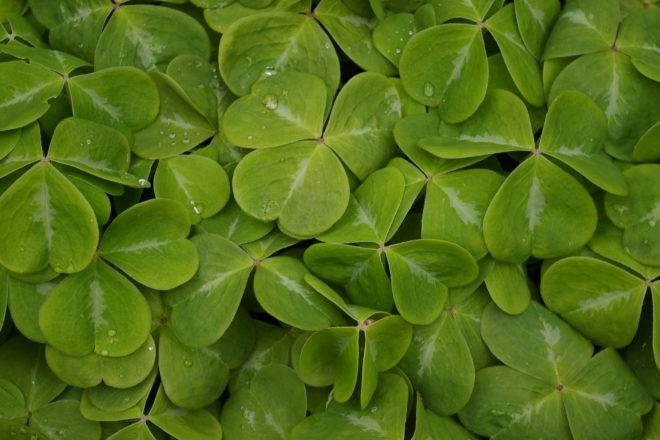
Sweet Briar Rose is not native to the Northwest, but this is in our garden because Louisa Boren brought seed with her from Il. in 1851 when the Denny and Boren family Settled on Alki. The sweet briar rose (Rosa eglanteria), the apothecary’s rose (R. gallica var. officinalis) and the rose ‘Harison’s Yellow’ were all favorites to take and plant at a new house in the West. We can still see these roses in gardens today, and they are still offered in catalogs. They are sentimental favorites that appeal to old-rose fanatics, those with a sense of history and anyone who appreciates the perfume and grace of yesterday.
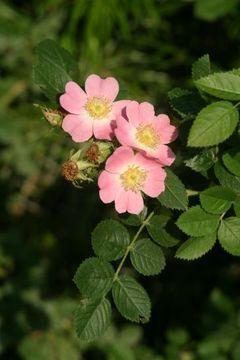
Sword Fern The distinctive, long fronds of the Sword Fern were of great use to Native people in the area. The stem of the plant is edible and the leaves were used as paper towels.
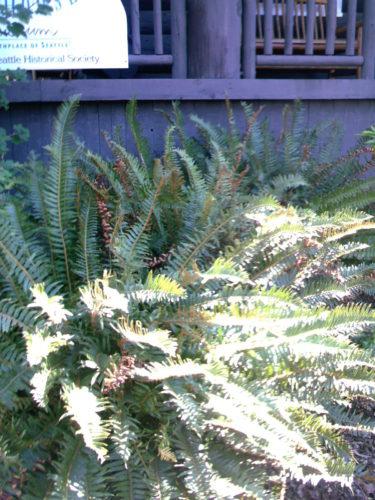
Western Bleeding Heart
Hardy and reliable, the Western Bleeding Heart looks more fragile than it is. Not at all invasive, it will spread over time to cover an area. This is a summer dormant species, so disappears for a couple months each year. Its spring foliage is a good foil for bulbs and hides their dying leaves as well.
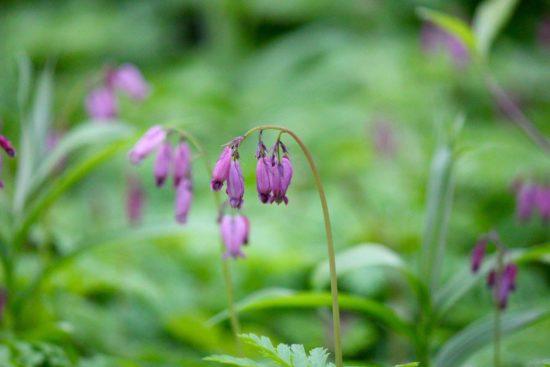
Special thanks to volunteers Meghan Freeman for photos and Mary Gunderson for research. Additional photos and research provided by Log House Museum staff.
Selected references:
Briggs, Josie. Creating Small Habitats for Wildlife in Your Garden. Guild of Master Craftsman: East Sussex, 2000.
Gunther, Erna. Ethnobotany of Western Washington: the Knowledge and Use of Indigenous Plants by Native Americans. University of Washington: Seattle, WA, 1945.
Jacobson, Arthur Lee. Wild Plants of Greater Seattle. Arthur Lee Jacobson, 2008.
Pojar, Jim and Andy MacKinnon. Plants of the Pacific Northwest Coast: Washington, Oregon, British Columbia, & Alaska. Lone Pine: Vancouver, B.C., 1994.
Prinzing, Debra. Pacific Northwest Garden Survival Guide. Fulcrum Publishing: Golden, 2004.
Stark, Eileen M. Real Gardens Grow Natives. Skipstone (imprint of Mountaineers Books): Seattle, 2014.






